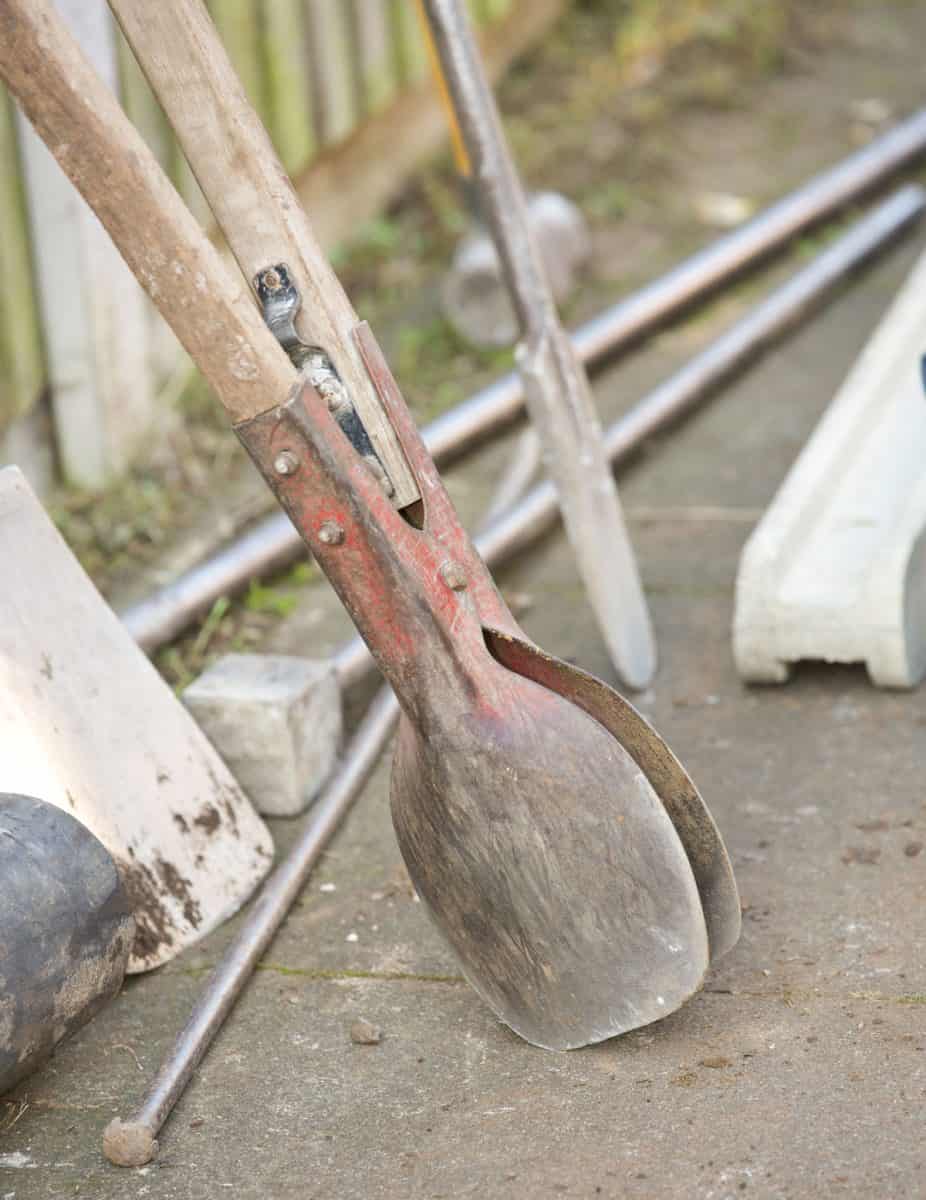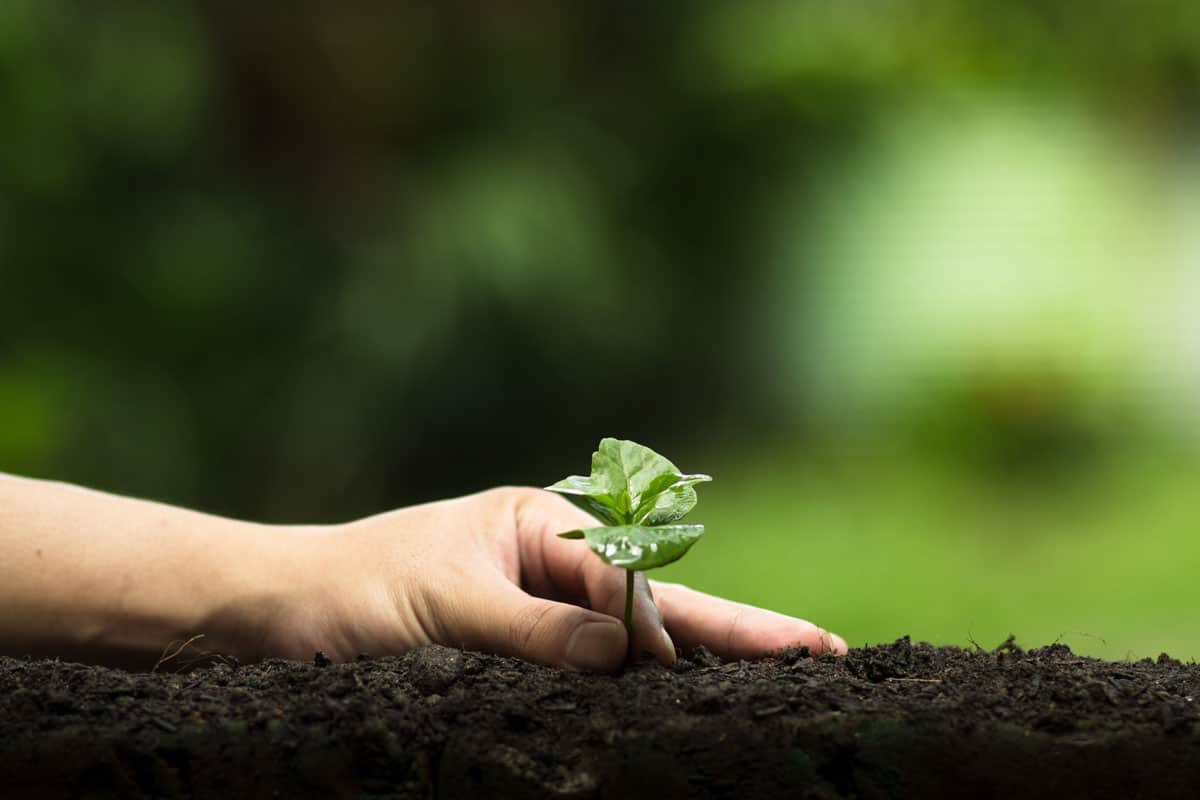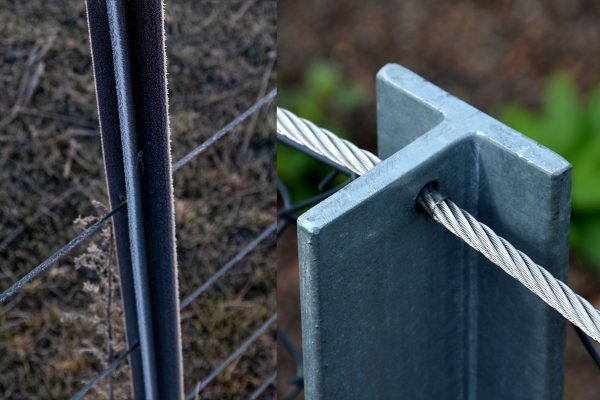To reduce the stress that comes with tree planting, you may need tools to help you carry out tasks like hold digging. But what type of tool is suitable for this, and can you use a post hole digger? To directly answer your question, we have done thorough research on the subject to provide you with all the answers you need.
You can use a post hole digger to plant trees and even shrubs, especially on hard-surfaced grounds. The post hole digger lets you dig deep easily to create the right-sized hole for your tree planting needs.
To learn more about using a post hole digger, we encourage you to keep reading as we have created a detailed guide on what a pole digger is and how you can successfully utilize it for planting.

What is a Post Hole Digger?
A post hole digger is a tool that consists of two flexible shovel-like blades that form a small hollow cylinder approximately a foot long and an inch wide. It also has two long handles that can open or close the blades.
It is often used to dig holes in the earth, typically ranging in width from a few inches to approximately one foot.

Uses of Post Hole Diggers
Post hole diggers can serve a lot of purposes aside from planting trees. Some common uses of the post hole diggers are;

- Post hole diggers are used to dig deep holes, which would typically be out of the user’s reach.
- It is used for the installation of signposts.
- Post hole diggers are used to build fences for houses to ensure privacy.
- Solar panel post installation.
- Outdoor clothesline installation.
- Planting trees, shrubs, and flowers.
What Size Of Hole Should I Dig For A Tree?
When digging a hole to plant a tree, you must first excavate a wide planting hole. The hole should be around three times the width of the tree's root ball.
Also, the loosened soil near the tree will allow young roots to develop and spread for better tree health easily. Lastly, the hole depth should also be 2–3 inches less than the root ball's.
Properly drained holes are the most suitable for planting. When you're working with poorly drained holes that are difficult for planting, the width of the hole should be about three times that of the tree's root ball.
The depth of every planting hole should be considered approximately two-thirds of the root ball's height.
How Do You Prepare a Hole For Planting?

When preparing a hole for planting, you need compost or dry manure of the correct quantity to fill the hole for each tree. If you choose to use fresh manure, prepare the holes four weeks before planting the trees so that the manure doesn’t ruin the roots.
You should also keep the following points in mind:
- Make holes for planting 24 inches wide, 24 inches long, and 24 inches deep.
- Dig out the topsoil, which is 10 inches of the main soil, and keep it at a side corner of the hole. Then, 14 inches at the bottom and put it on the other side of the hole.
- Allow the soil to be free at the bottom of the ground hole.
- Re-cover the top part of the soil by using a shovel.
- Evenly mix the remaining manure with the soil bottom at a ratio of 1:2.
- To enable proper watering, leave about two inches in the hole with the topsoil mixture.
- For soil to settle downwards, fill up the soil hole with water. If the soil sinks afterward, repeat the process till it's firmly put.
- Now, your soil is ready for planting.
How Deep Can You Go With a Post Hole Digger?
When working with a post hole digger, you can dig an eight-inch-width hole with straight sides nearly four feet deep. Commonly, the scissored handles are made to collide with the sides of the hole at about 18 inches down.
Therefore, If you choose to go deeper into the ground, you have to expand the hole, slowing down the excavation and the backfilling process.
Depending on the model of the post hole digger, some go deeper with nice soil structure having no rocks and roots in them. It can go about 2-4 feet down.
This does not justify the complexity encountered during digging. You can loosen the soil surface with a pipe. This way, you can go 10 feet deep into the ground.
Can You Plant a Tree Without Digging a Hole?
Yes, you can plant a tree without digging a hole. This can be done by selecting your desired plant, placing the root on the ground of your chosen location, and then covering it with a heap of soil of the same height as the root ball and at least three times wider.
The roots will begin to reach into the soil and penetrate deeper into the soil on their own. All you have to do is to water a bit more than usual.
Because the tree is growing in a heap of soil, chances are that it can be affected by drought before it is fully rooted. Ensure it is properly staked so that its root ball won't be moved in the wind. The stake can be removed after the second year.
How Do You Plant a Tree on a Hard Ground?

As you dig holes for planting, you might encounter multiple rocks on hard ground, and an attempt to move to a different position might give you the same outcome. This can complicate the process, but there are simple ways to plant even on rocky and bad soil surfaces. Here's how:
1. Use The Service of a Utility Company
A few days before you dig the earth to plant, contact an underground utility locator to ensure the planting location is free of cables and subsurface utilities. Also, trees should be at least 15 feet away from building foundations.
2. Use Garden Tillers
A garden tiller should be used when tilling the area before planting. More importantly, ensure it is the same depth as the root ball and at least three times the width of the root ball. However, you may have to use larger equipment to dig up the area if the earth is extremely rocky and dry.
3. Remove Large Rocks
To make it easier for roots to spread around the soil and penetrate the ground, you have to remove the large rocks. You can use these rocks as garden borders for flower beds. A rake can be used to remove smaller rocks from the soil.
4. Add Organic Compost
Evenly distribute the organic compost and manure to the tilled layer of the soil. The layer has to be half as thick as the depth of the tilled soil. You should also mix the soil.
The organic matter of the soil adds nutrients and improves the soil structure. Till the soil twice and add organic matter to make it easier for tree roots to penetrate.
5. Prepare Tree Roots
Remove any unnecessary items within the soil side. To properly integrate tiny tree roots, cut the carefully sealed roots with a knife.
6. Plant The Tree
Put the tree in the hole, lift the root ball and not the stem. Plant the tree with the roots buried and ensure the trunk is above ground or at the same depth as in the pot or burlap.
Note that rodent infestations, horrible decay, and stunted development will result if the tree is planted with the trunk underground.
7. Fill The Hole
Fill the hole using the tilled-out soil. Ensure it is to the depth of the plant. Also, ensure that the earth is packed as this helps removes air pockets that often result in the tree roots drying out. It is also advised you do the packing with your hands.
8. Water The Planting Area
Immediately after planting the tree, spray water on the entire surface using a garden hose or spray can. Moisten the ground deeply to deteriorate any remaining air compartments in the soil. Tamp the soil again with your hands to confirm you haven't left any free air pockets.
Other tips you should keep in mind while using a post hole digger or planting trees include;
- Prepare a proper planting hole for the trees and shrubs. This can be done using a post hole digger or any other appropriate tool.
- Inspect the root of the tree and reorganize them if necessary.
- Get rid of air pockets when planting trees.
Conclusion

Trees, shrubs, and crops, in general, all have a unique planting process. Before planting a tree, the hole for the planting must be deep as this gives the plant greater chances of receiving the earth's nutrients. A post hole digger is your go-to tool to prepare just the right hole to plant your trees.
For more articles, check out these engaging posts:



